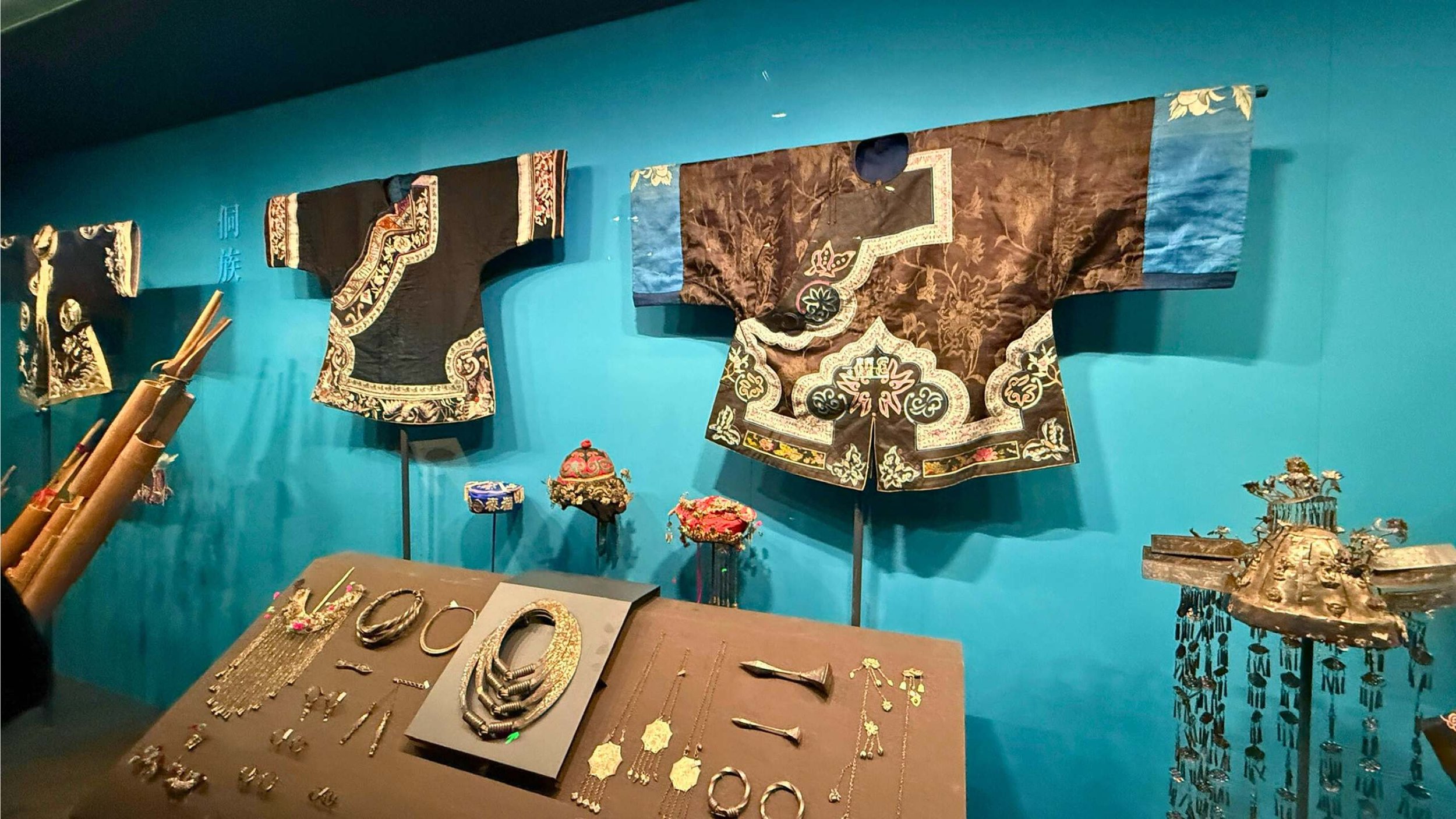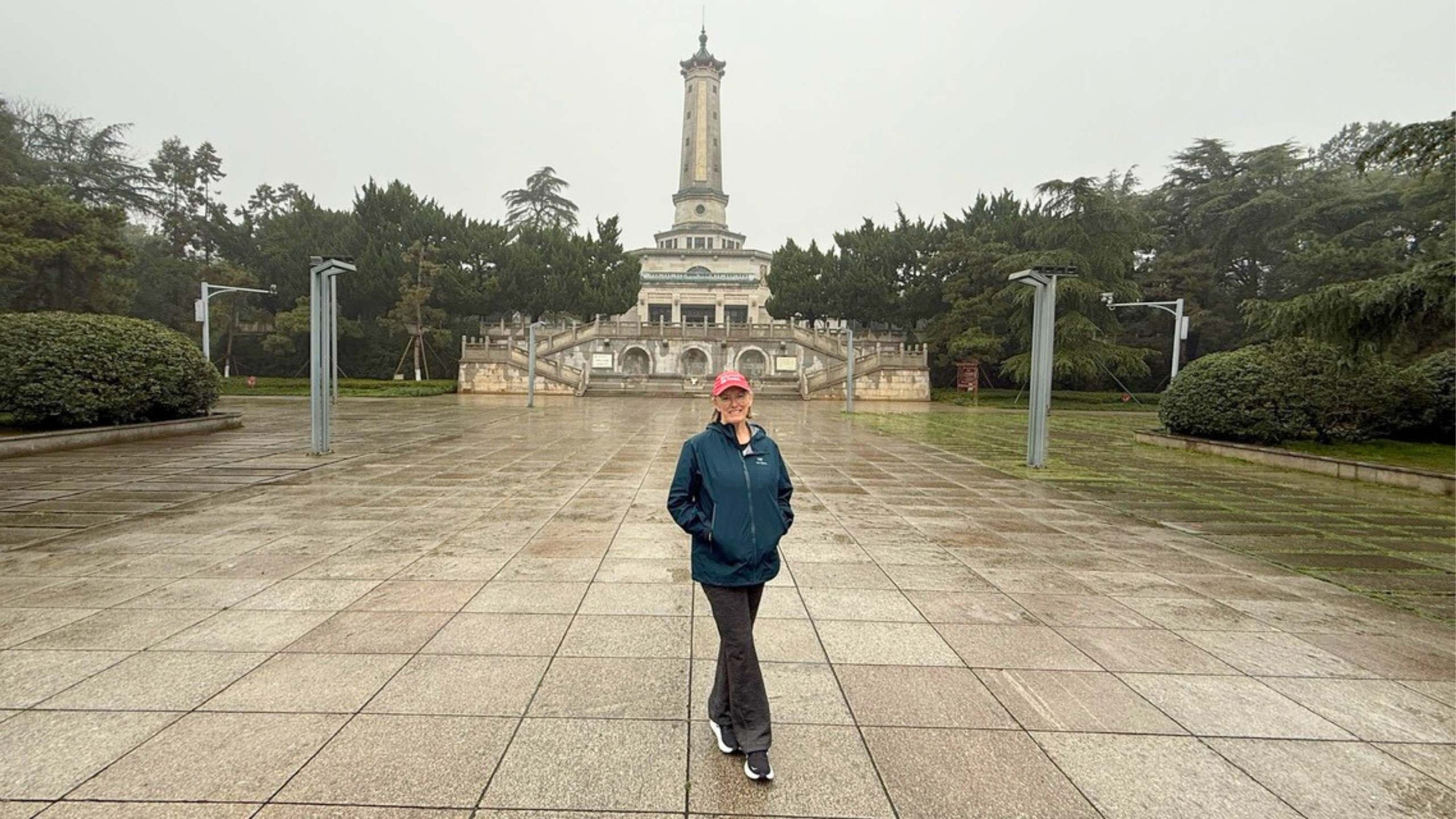Changsha, China: Travel Guide
Hunan Province, China, is home to otherworldly landscapes and picture-perfect ancient towns. Changsha is its capital. At first glance, Changsha's most recognizable landmark is the monumental bust of young Mao Zedong. But its appeal goes far beyond that. Dig deeper and be surprised by the hidden gems you can unveil in Changsha, which we experienced on our way to Zhangjiajie.
Along with all the fascinating places to visit in Changsha, we learned it was the first city in China to become a UNESCO Creative City of Media Arts in 2024. This accolade lends some foreshadowing for what to expect from Changsha. And don't worry about missing Europe – Changsha's got you covered on that front, too!
Locally known for Mao Zedong's adoration, as the gateway to Zhangjiajie's Avatar Mountains, home to a cyberpunk city skyline and stinky tofu, Changsha is an eclectic destination not often heard of abroad. But, after having been completely burned down in 1937 as a defense strategy against Japanese invasion, Changsha is dusting off the ashes en route to becoming one of the best places to visit in China. Still wondering if Changsha is worth visiting? After reading our travel guide to Changsha attractions, you'll have enough reasons to add it to your China itinerary.
7 Changsha Attractions You Can't Miss
Orange Isle
Spanning three miles in the middle of the Xiang River, Orange Isle – locally known as Juzizhou Island – is one of the most important places to visit in Changsha. It's a 5A national tourist attraction (China's highest rating) with a history dating back to 305 AD, named for the citrus orchards that once thrived here. However, its modern fame stems mainly from the colossal granite bust of Mao Zedong, overshadowing lush green spaces, pavilions, cultural exhibits, and other statues dotting the park.
Mao grew up in the region and attended university in Changsha. Orange Isle is one of the places where he spent his time ideating. His celebrated poem dedicated to Changsha, inscribed on a large rock at the park's entrance, inspired the giant statue. Every measurement of the statue symbolizes his milestone – 32 meters in height for his age when he penned the poem, 41 meters in width represents his years as a leader, and 83 meters in length reflects his lifetime. A photograph with Mao Zedong's bust is a rite of passage for every Changsha traveler.
Beyond that, the island is a premier observation point of the famous skyscraper spectacle that comes alive at 7 pm with synchronized light displays. Admiring the cyberpunk skyline synonymous with China is among the best things to do in Changsha in the evenings.
Yuelu Mountain
On the opposite bank of Xiang River lies Yuelu Mountain, a National Scenic Area dotted with historic landmarks. A hike to the summit takes about an hour, though a shortcut is available via a cable car. On the way down, be sure to stop by Aiwan Pavilion, also known as the Autumn-Admiring Pavilion. As the name suggests, it was constructed to admire fall foliage. The pavilion dates back to the Qing Dynasty and was frequented by Mao Zedong during his studies at Hunan University. It's still a popular place for pondering with students and visitors today. Some of those students make their way over from Yuelu Academy, the most important landmark at the mountain's base. Considered one of the four most prestigious institutions in the country, Yuelu Academy is one of the oldest in the world, dating back to 976 during the Song dynasty. Due to the popularity of these Changsha attractions, we recommend visiting on a weekday.
Changsha Cultural and Arts Center
Another focal point of the Yuelu district is situated near Meixi Lake, this time not ancient nor natural, but futuristic and astounding. The construction in question is the Changsha Cultural and Arts Center, designed by Zaha Hadid Architects, who have developed several impressive buildings all over China. The entire complex symbolizes Changsha's evolving culture that blends tradition and innovation in the most fascinating ways.
The curves of the buildings, which resemble spaceships from afar, complement the pedestrian paths that snake between them and towards Meixi Lake, surrounding parks full of scenic trails and unique footbridges, including the bright red Lucky Knot Bridge. Designed by NEXT architects, the bridge has three paths bending up and down in an infinite loop inspired by Mobius strip and Chinese knotting. It's a must-visit Changsha attraction for photography and architecture aficionados.
The buildings house multipurpose halls and the MICA Contemporary Art Museum, where you can feast your eyes on breathtaking atriums that will undoubtedly keep you trigger-happy. End your visit in front of Meixi Lake to watch the Water Show that takes place on Tuesday, Thursday, Saturday, and Sunday at 7 pm.
Hot Tip: Want more fascinating architecture and another art medium? Head to Xie Zilong Photography Museum, located near Yanghu Wetland Park. The white concrete building and photo and video work on display aim to promote the development of this art medium in China.
Hunan Provincial Museum
Although most relics and landmarks of Changsha's early history burned down in the fire of 1938 and were destroyed during the Cultural Revolution, the Hunan Museum is still one of the most significant museums in China. It houses a collection of over 180,000 artifacts. The most transfixing of them are the objects found in Mawangdui Tombs, excavated in the 1970s, showcasing the craftsmanship of the Han Dynasty. With the items, a female corpse was also unearthed. Xin Zhui, known as Lady Dai, is one of the world's best-preserved mummies displayed in Hunan Museum. Despite being over two millennia old, her skin is still intact, and she has a full head of hair. Visiting her body, coffin, and items she had been buried with is undoubtedly the highlight of the Hunan Museum. The Mawangdui Tomb, where Lady Dai was discovered, sits on Changsha's outskirts and is also open to the public.
Huayi Brothers Movie Town
China is notorious for constructing copies of European cities as residential complexes, theme parks, and film locations. There's an Eifel Tower in Hangzhou, Dutch windmills in Suzhou, and London Bridge in Shanghai. Changsha has little Italy up its sleeve. So, if you are missing a dose of Europe with a quirk on your China itinerary, head to Huayi Brothers Movie Town. Located in Dawang Mountain Tourist Resort, it's modeled after Venice and Assisi, and visiting it feels like taking a trip to Italy. The village is replete with canals, Venetian masks, and sprawling plazas studded with al fresco Italian eateries. But Chinese background music on speakers, crowds of domestic tourists, and Chinese signs give away your real location. Although the facades are near-perfect imitations of Renaissance architecture, on the inside, the entertainment venues are still Chinese cyberpunk to the core.
Taiping Street
There is no better place to try Changsha food than Taiping Street, a pedestrian food street considered a must-see for Changsha attractions. All sorts of eateries are jam-packed on the main street and branch out into smaller alleyways. Although many venues are pretty hip, the street actually dates back to the Han Dynasty. It houses rebuilt historical buildings like the former residence of Jia Yi, a famous writer from the Han Dynasty, which is also worth a visit. But let's face it, you are here primarily for food, so here are some delicacies you can't miss.
First things first – stinky tofu. Black, crispy, and fragrant, this combination may not seem appealing at first, but let us assure you it's worth a try. The trick to eating these crispy pillows is to poke a hole in the center and fill it with sauces. Be warned, they are spicy. But the blend of pungent scent, intense flavor, and crispy-soft texture may turn you into a fan of black tofu. Now for your burning question – why is it black? The brine the tofu is soaked in is what dons the color and smell. It comprises soy sauce, herbs, mushrooms, and ferments for months and sometimes years beforehand! So, making this snack is laborious and somewhat of an art form.
Suppose that was a bit too much for your palate, so soothe it with milk tea from Chayanyuese – Changsha's signature milk tea topped with a generous swirl of whipped cream. The crowd goes wild for this local specialty that has acquired its fame thanks to social media and many flavors. It's soul-warming and indulgent, and you'll want seconds. The never ending queues at every branch are a testament to that.
And for dessert, grab a bowl of sugary rice balls (tang you baba) deep fried or boiled in syrup. The former is covered in a crunchy shell, and both melt equally in your mouth, leaving a lingering taste of brown sugar. If you still have space, try both varieties served in a bowl of 6 balls.
Hot Tip: Still hungry? Walk over to nearby Pozi Street and Huangxing Road for more street food and end your Changsha food tour on Huangxing Square to soak in neon galore.
Super Wenheyou
Wenheyou is a three-story complex that positions itself not merely as a food court but as a cultural hub en route to becoming a social media sensation. The complex is packed with food stalls resembling an indoor night market, with the real draw being the retro theme that attracts big crowds after nostalgia and photo ops. The building is modeled on a Chinese market from the 80s and 90s with a cyber spin. Decked out with vestiges of passé and neon signs and serving up foods that transport visitors back in time, Wenheyou has become one of the most popular Changsha attractions. There is even a cable car sweeping the entire complex, which is so big that it feels like you are outdoors. Keep your eyes peeled for crayfish (xiao long xia) and stinky tofu. We recommend going at midday to avoid crowd gatherings at dusk.
It sounds like Changsha, China, is worth visiting, right? Go ahead and pen it into your China itinerary and find more places to visit in China in our travel resources.




